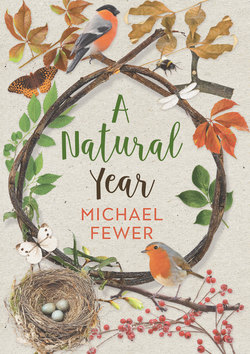Читать книгу A Natural Year - Michael Fewer - Страница 9
На сайте Литреса книга снята с продажи.
ОглавлениеFOREWORD
It was in the late 1980s on the Aran Islands, when taking trainee primary-school teachers – who were there to brush up their Irish – on nature walks, that it dawned on me that this particular sort of thing was quite a useless exercise in many ways. How could these students from the east of Ireland feel any excitement at seeing the wonderful bloody cranesbill, when they had no knowledge of its more modest relation Herb Robert, a common plant found in hedges and woodlands countrywide? Or indeed expect them to be mightily impressed with sightings of choughs with their brilliant red legs and bills, when most of them didn’t know the difference between a rook and a jackdaw?
So, when I got the opportunity to present a whole series of wildlife episodes for the then enormously popular children’s programme The Den at the end of the 1990s, I made sure that the common residents of my back garden were the stars. These were five- minute weekly slots on such interesting creatures as bumblebees, bluebottles, snails, centipedes, woodlice, etc., all of whom performed splendidly once the cameras started rolling. Ladybirds obligingly fell into my upturned umbrella when I shook the leaves on the tree. Spiders – great big hunting ones – were always in my pitfall traps on inspection in the morning, or so it appeared to the viewer. And as the episodes of Creature Feature (all fifty of them) were shown on repeat for the following five years, a whole generation of younger children – not to mention university students lounging at home looking at afternoon telly in those halcyon pre-internet and laptop days – became aware of and interested in what could be found just outdoors wherever they were.
We only conserve the things we love, and we can only love the things we understand. An rud is annamh is iontach, perhaps, but not when it was once fliúrseach, as our corncrakes and breeding curlews were until relatively recently. The ability to notice things and the curiosity to ask questions are the marks of a scientist, no matter what age they are or live in. But being able to communicate so well that the viewer, listener or reader immediately wants to go and experience what is being described, this is a much rarer talent. Michael Fewer has always been curious, always been aware of his surroundings, as is attested to by his many publications over the years. In this book he allows the reader to share what has made the day special for him as he looks out the window or walks through the local fields. It is a real celebration of nature.
Éanna Ní Lamhna
